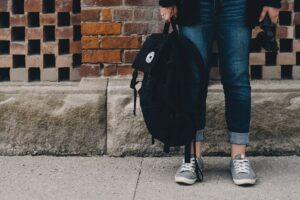
We are a reader-supported education publication. When you buy through links on our site, we may earn an affiliate commission to help us keep providing content.
Every student in your classroom has a unique story to share. Do you provide a safe and supportive environment for them to voice it?
People learn and grow through the experiences of others. Embracing everyone’s diverse points of view opens young minds to new perspectives and ways of looking at the world. Here are nine ways to celebrate student voices in the classroom while building a positive and nurturing learning environment.

1. Make a Classroom Collage
Your classroom is more than a collection of students — it’s a team. What lineup is complete without a photographic roster complete with “stats?”
Have your students create collages depicting the things that make them unique. Give them time to search for the imagery they feel represents them. When finished, decorate the walls with their creations.
2. Give Students Ownership Over Class Rules
To honor student voices, give them ownership over their classroom experience. Think about it — aren’t you more likely to follow guidelines when you play an active role in developing them?
This activity teaches the value of collaboration while giving them a clear understanding of the expectations. You can start by brainstorming as a collective, then breaking students into groups to design their list. Once you amass your master list of guidelines, you can use sticky notes to have learners provide examples of how to follow each one in practice.
3. Let Students Select Reading Materials
If your required reading list consists of nothing but white male authors, your learners only enjoy a tiny fraction of the literary experience. Part of celebrating all student voices means embracing diversity.
Give your students an influence in selecting reading materials. Even math teachers can build a classroom library where learners can choose novels while waiting for their classmates to finish tests and quizzes.
4. Start a Classroom Newsletter
Perhaps your school celebrates student voices with a literary magazine. However, as valuable as such tools are, they often include submissions from a selected group.
Why not start a classroom newsletter to highlight every learner’s accomplishment? You can include a Reddit-style “Today I Learned” column where each student takes a turn writing about a fascinating tidbit they recall from their studies.

5. Collaborate, Collaborate, Collaborate
A surefire way to make more student voices heard is to use collaborative learning frequently. Students who might hesitate to speak up in front of the class nevertheless contribute to a smaller audience.
Remember, it’s okay to use class time to teach collaboration. Skills such as how to initiate discussions and clarify points grow more quickly under adult guidance.
6. Use Student Surveys
What do your students think about your class? What do they hope you never change, and which improvements would they like to see implemented? Give them a safe place to share by using periodic anonymous surveys.
You don’t have to create extra work for yourself tallying up paper — nor must you waste trees. Websites such as SurveyMonkey compile student feedback automatically, giving you rapid results.
7. Develop TED-Ed Clubs
Are you a fan of TED talks? These events feature expert speakers from every field imaginable — celebrate student voices by starting a club at your school.
Start by talking with other educators who might share your interest. Then, watch a short video, fill out your application, and chat with a member of the TED-Ed team. One beautiful feature of this activity is that you can do it in a socially distant, virtual environment, handy if your school undergoes further COVID-19 shutdowns.
8. Play Ball
How can you create an environment where every student feels safe sharing? One way to reduce the problem of “so-and-so always raises their hand” is to play ball.
Introduce this activity to your class in a non-threatening way by asking a question like, “Describe your favorite holiday without using its name.” Then, toss a soft rubber or Nerf-style ball to a random student. Once they answer, they then throw the ball to someone else.
You can play a variation of this game using two inexpensive boxes of crayons. Give a different color from one container to each student. Then, as you ask questions, select a color from your package. Whoever has burnt sienna has to answer.
9. Include an Element of Choice in Evaluations
Maybe you heard the adage about grading a fish on its ability to climb a tree. Children have various strengths and talents, and you can honor your students’ voices by giving them a choice when it comes to evaluations.
Some students might prefer to write a traditional essay. Others might enjoy creating a Prezi presentation, delivering a speech, or building a model. As long as they demonstrate mastery of the subject matter, you’ll generate enthusiasm and engagement by letting them share their gifts.
Celebrate Student Voices in the Classroom With These 9 Tips
It takes the participation of all to make education dynamic, evolving, and meaningful. Celebrate student voices by using the nine tips above in your classroom and school.

latest in learning!
Get the latest updates in learning, teaching and everything in between! Whether you're a student or an educator, we offer the inspiration you need to fuel your classroom experience.









